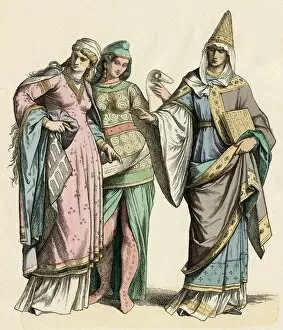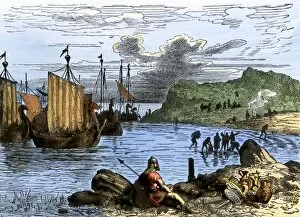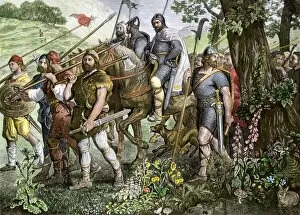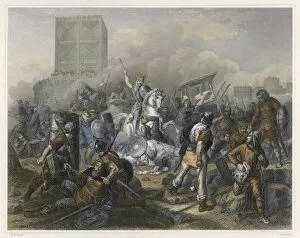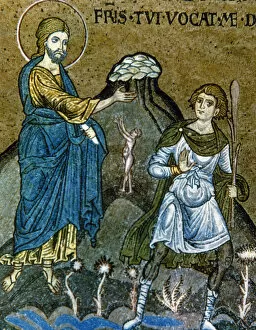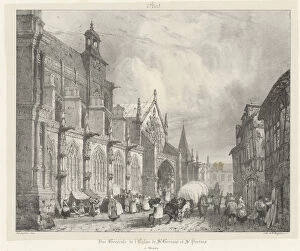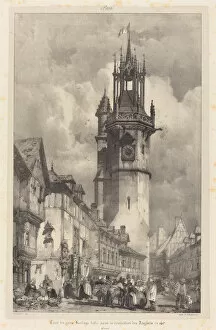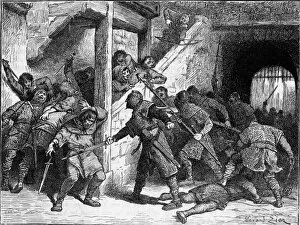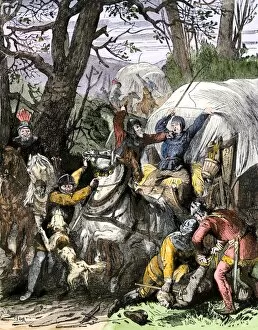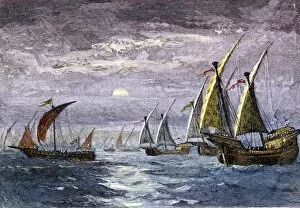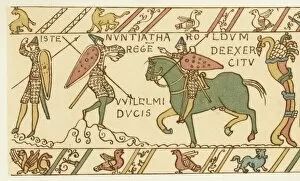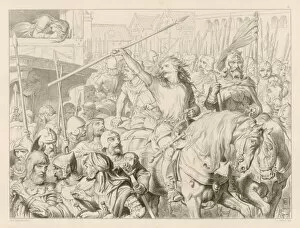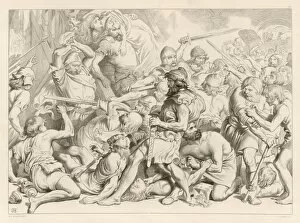Normans Collection (#7)
The Normans, a powerful medieval civilization, left an indelible mark on history through their conquests and cultural influence
For sale as Licensed Images
Choose your image, Select your licence and Download the media
The Normans, a powerful medieval civilization, left an indelible mark on history through their conquests and cultural influence. The Bayeux Tapestry stands as a testament to their triumph in the Norman Conquest, depicting scenes of battle and victory. In this intricate artwork, we catch a glimpse of the bravery and determination that defined these warriors. Feasting was not only depicted in tapestries but also played a significant role in Norman society. A detail from the Bayeux Tapestry showcases a lavish feast where nobles gathered to celebrate their victories, and is here that bonds were forged and alliances solidified. One cannot discuss the Normans without mentioning William I, known as William the Conqueror. This formidable leader spearheaded the invasion of England in 1066, forever changing its course. His legacy lives on through architectural marvels like Leeds Castle, which he rebuilt into a stone fortress during his reign. Religion held great importance for the Normans as well; St Albans Cathedral stands tall as evidence of their devotion. This magnificent structure reflects both Norman architecture and religious fervor, serving as a reminder of their spiritual impact. The Battle of Hastings remains one of history's most pivotal moments – it marked William's decisive victory over Harold II and secured his place on England's throne. This clash between Saxon and Norman forces altered English history forever. Beyond military might, artistry flourished under Norman rule too. The Palace of the Normans boasted Byzantine mosaics at Palatine Chapel—a testament to their appreciation for beauty even amidst power struggles. William I was succeeded by three more kings: William II, Henry I, and Stephen—forming what became known as "the four Norman kings. " Each ruler left behind his own unique imprint on England’s landscape during this transformative era. From landing on English shores to establishing themselves firmly within its borders—the story of the Normans is one filled with ambition, conquest, and cultural fusion.


